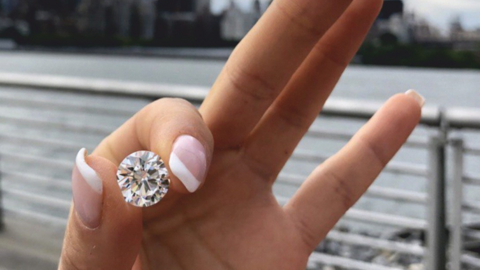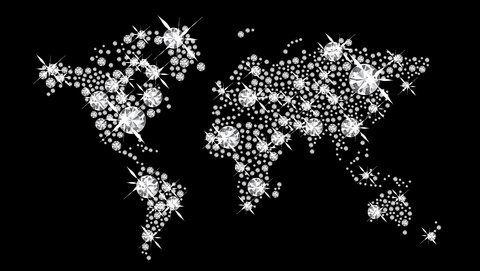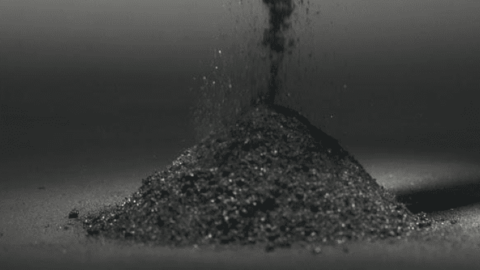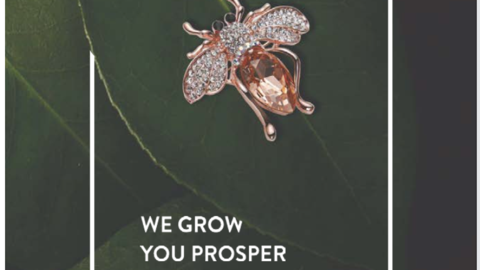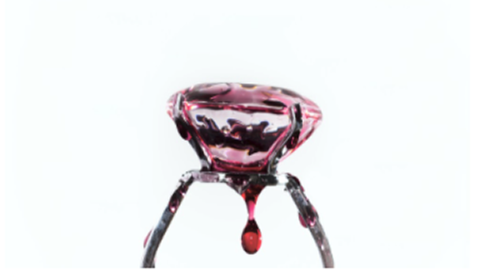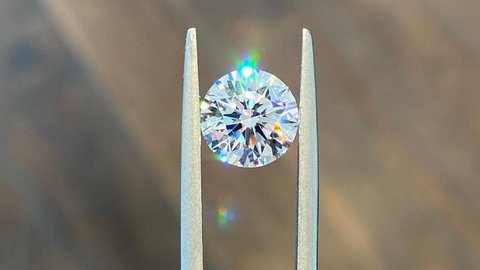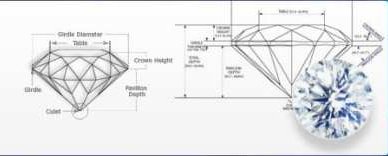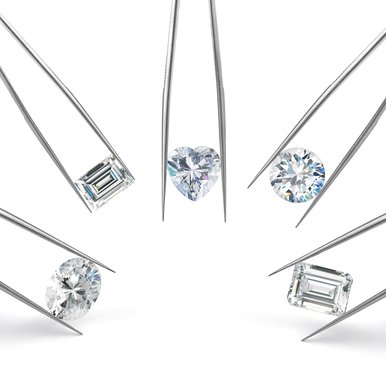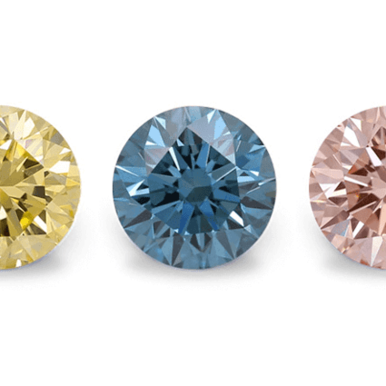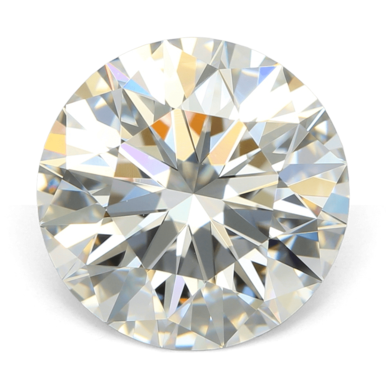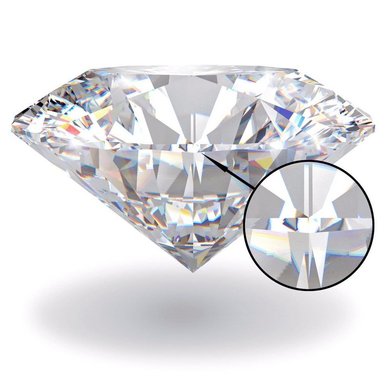Cushion Cut Lab-Grown Diamond Rings: Guide & Best Designs
Author: Alex K., CMO at Labrilliante Updated: 2025-11-18 Reading Time: 12 minutes
Cushion cut lab diamonds merge 18th-century pillow geometry with CVD/HPHT purity, featuring 58-facet patterns optimized for fire dispersion over brilliance. Vintage-inspired settings require 40-60% more labor but become cost-accessible through manufacturer-direct models eliminating retail markup. Strategic pairing of G-H color grades with rose or yellow gold masks tint while allocating budget toward larger carat weights—a calculated trade-off retail buyers rarely exploit.
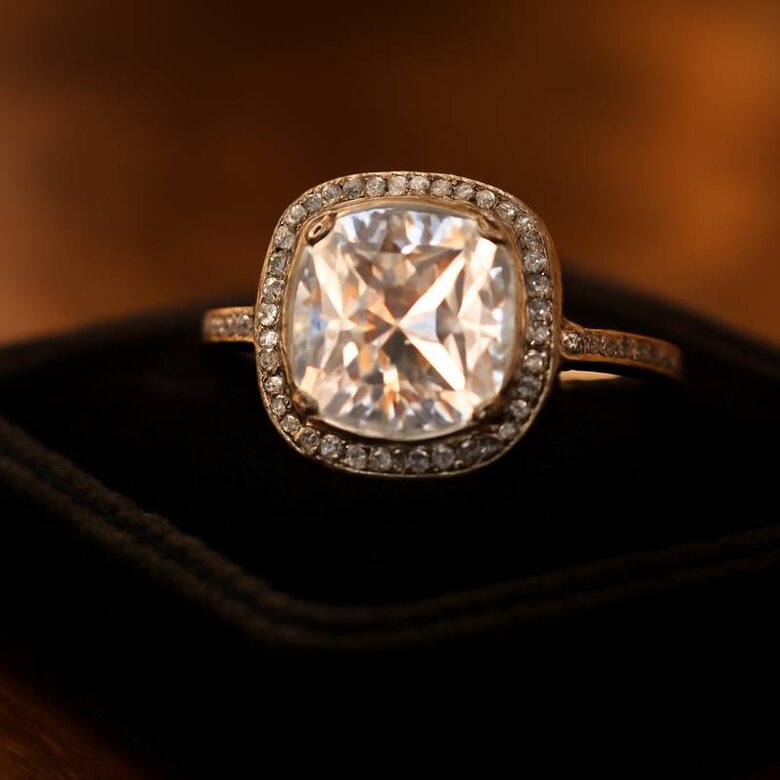
When cultural moments collide with jewelry trends, entire market segments shift overnight. Cushion cut lab-grown diamond rings occupy the intersection of ethical consumption, vintage nostalgia, and accessible luxury—three forces reshaping engagement ring psychology for millennials and Gen Z. This guide decodes the technical specifications, design strategies, and economic realities behind cushion lab diamonds, from 58-facet optical physics to manufacturer-direct pricing eliminating 45-60% retail markup. You'll discover how facet patterns create chunky versus crushed ice appearances, why rose gold masks near-colorless tint enabling strategic downgrades, and which Art Deco proportions balance filigree density with maintenance demands. The result? Informed decisions aligning budget, aesthetics, and values without compromising craftsmanship.
Why Some Jewelers Still Recommend Natural Cushions Over Lab-Grown
Traditional gemologists argue that lab-grown diamonds lack investment value and emotional authenticity—two claims worth examining honestly. The resale argument holds partial truth: natural cushion diamonds retain 25-40% of purchase price in secondary markets, while lab-grown stones currently command minimal resale value due to rapidly declining production costs. For buyers viewing rings as financial assets or family heirlooms spanning generations, this creates legitimate concern about long-term value preservation.
The emotional authenticity argument centers on geological rarity and romantic narrative. Natural diamonds formed over billions of years carry metaphorical weight that laboratory crystallization—completed in weeks—cannot replicate. Some buyers genuinely value the ancient origin story and perceive lab-grown stones as diminished symbols despite identical physical properties. This represents subjective preference rather than objective quality difference, but subjective meaning drives jewelry purchasing decisions.
Here's the counterpoint supported by data: 73% of millennial and Gen Z buyers prioritize ethical sourcing and budget optimization over resale value, according to 2024 engagement ring surveys. For consumers planning lifelong wear rather than future liquidation, the investment argument becomes irrelevant. The authenticity concern dissolves when recognizing that lab diamonds demonstrate identical optical, chemical, and physical properties—they are real diamonds, simply created through different geological conditions. The choice ultimately depends on whether buyers value ancient formation narrative or prefer allocating budget toward superior specifications, larger carat weights, and elaborate settings that retail natural diamond pricing prohibits.
Discover Vintage-Inspired Cushion Cut Lab Diamond Designs
Vintage-inspired cushion cut lab-grown diamonds blend 18th-century pillow-shaped geometry with modern Type IIa purity. These stones feature 58 facets arranged for maximum fire—the same optical design that made Old Mine cuts treasured in Victorian eras. Now reproduced through CVD and HPHT methods.
The appeal? Cushion cuts naturally complement Art Deco filigree, Edwardian milgrain, and Belle Époque halos. Unlike round brilliants demanding minimalism or emerald cuts enforcing modernism, cushions accommodate elaborate metalwork without visual clash. Manufacturer-direct models enable authentic period detailing—hand-engraved filigree, grain-set pavé, graduated milgrain—at production cost rather than retail markup.
Here's the trade-off: vintage settings require 40-60% more labor than contemporary solitaires. This cost becomes prohibitive when retail margins compound on both diamond and metalwork. Direct manufacturing solves this, allowing budget allocation toward both premium 2-carat cushions and period-authentic settings.
Seasonal trends for Christmas 2025 and Valentine's Day 2026 show renewed interest in heirloom designs as millennials and Gen Z prioritize timeless elegance. The cushion's soft romantic glow—achieved through larger facets dispersing white light into spectral colors—aligns perfectly with ethical lab-grown positioning. Where rounds project modern precision, cushions communicate sustainable romance.
[Placeholder Table: Cushion Cut Lab Diamond vs. Round Brilliant vs. Natural Cushion - Complete Comparison of Specifications, Pricing, and Style Compatibility - Helps buyers immediately understand which diamond shape and type matches their aesthetic preferences and budget constraints]
[Placeholder Image: Side-by-Side Comparison of Cushion Modified Brilliant in Vintage Halo Setting vs. Modern Solitaire Setting - Shows how the same diamond shape creates completely different aesthetic effects depending on setting style, helping buyers visualize their preference between vintage romance and contemporary elegance]
Antique Halo Settings With Milgrain Detailing
Antique halos frame cushion centers with borders of smaller diamonds secured by tiny metal beads, while milgrain adds textured edges mimicking pre-industrial tool marks. This French "thousand grains" technique reached peak sophistication during the Edwardian era (1901-1915) when platinum's strength allowed delicate structural elements.
The functional advantage? Halos increase perceived brilliance by redirecting light toward the cushion's pavilion facets. Surrounding accent diamonds (typically 1.5-2mm diameter) catch light at angles that enhance the cushion's characteristic fire. The effect proves particularly valuable for modified brilliants with larger facet patterns producing broader color flashes rather than rapid scintillation.
Milgrain serves dual purposes. Aesthetically, the beaded texture disguises transitions between halo diamonds and metal framework. Structurally, it reinforces thin metal channels—critical when platinum or 18k white gold measures only 0.4-0.6mm between adjacent stones. The rolled edge distributes stress, reducing channel cracking during daily wear.
What about sizing? Halo accents between 1.5-1.8mm diameter complement cushion centers from 1.0-2.5 carats without overwhelming geometry. Most custom orders specify this range regardless of retailer. Undersized halos create visual disconnection; oversized ones compete for attention and reduce the apparent size advantage halos should provide.
Hidden halos—accent rings sitting beneath the cushion girdle, visible only from profile—offer optical amplification with reduced vintage commitment. This appeals to buyers seeking sparkle enhancement without full antique styling, though it sacrifices the historical authenticity visible halos provide.
[Placeholder Image: Detailed Macro Photography of Milgrain Detailing on Halo Setting - Close-up view showing the precise beaded texture of milgrain work, the metal channel thickness (0.4-0.6mm), and how individual halo diamonds (1.5-1.8mm) are secured by tiny metal beads, demonstrating both the craftsmanship and structural engineering of authentic Edwardian-inspired settings]
Art Deco Filigree Bands for Timeless Romance
Art Deco filigree features delicate metalwork—scrolls, geometric lattices, openwork galleries—inspired by the 1920-1935 movement emphasizing symmetry and architectural geometry. Construction involves twisting fine metal wires (0.25-0.35mm diameter) into decorative patterns that reduce ring weight while increasing visual complexity.
Why do cushions suit Art Deco? Both emphasize symmetry, favor larger facets over intricate brilliance, and balance ornamental detail with clean primary forms. Designers in the 1920s developed specific gallery patterns complementing the cushion's rounded square outline—radiating motifs echoing corner curves, vertical shoulder patterns emphasizing length.
The structural challenge? Fine gold (24k) and pure platinum remain too soft for unsupported filigree thinner than 0.4mm, necessitating alloy hardening—18k gold with copper/silver or platinum with ruthenium/cobalt. The trade-off involves color: white gold filigree requires rhodium plating every 2-3 years as coating wears. Platinum maintains permanent color but costs 40-60% more and requires specialized high-temperature soldering.
Filigree density affects both aesthetics and maintenance. High-density patterns (60%+ metal coverage) create dramatic texture but trap debris, requiring ultrasonic cleaning every 2-3 months. Low-density (below 40%) simplifies maintenance but may appear unfinished. Medium-density at 45-55% balances visual impact with practical wearability—the specification most vintage reproduction requests target.
[Placeholder Table: Art Deco Filigree Density Comparison - Shows high-density (60%+), medium-density (45-55%), and low-density (below 40%) patterns with metal coverage percentage, visual impact rating, maintenance requirements, and ideal buyer profile for each density level]
Here's an interesting paradox: Art Deco jewelers worked exclusively with natural diamonds, yet the movement's geometric precision and industrial aesthetic aligns philosophically with laboratory crystallography more naturally than romantic Victorian styles celebrating organic imperfection. This creates positioning opportunity—Art Deco as the historical design language that anticipated modern diamond science.
[Placeholder Image: Art Deco Filigree Gallery View Showing Wire Thickness and Pattern Geometry - Detailed side-profile photograph displaying the openwork gallery construction with 0.25-0.35mm twisted metal wires forming geometric lattices, demonstrating how filigree reduces ring weight while creating architectural complexity that complements cushion cut symmetry]
Rose Gold Vintage Settings Versus Yellow Gold
Rose gold and yellow gold deliver distinctly different effects with cushion lab diamonds due to their interaction with fire dispersion and body color. Rose gold (18k: 75% gold, 20-22.5% copper, 2.5-5% silver) imparts warm pink tones emphasizing red and orange wavelengths in the cushion's fire. Yellow gold (18k: 75% gold, 12-15% silver, 10-13% copper) provides warmer contrast masking faint yellow tint in near-colorless grades (G-J).
The historical context matters. Rose gold gained popularity during the Victorian era when Russian "red gold" alloys became fashionable, then resurged during WWII when white metals faced military requisition. Yellow gold maintained continuous popularity as the traditional wealth display. White gold—a 20th-century invention—didn't exist during most "vintage" periods, making rose or yellow more historically authentic.
Here's the budget optimization strategy: Near-colorless cushions (G-H color) appear functionally identical to colorless (D-F) when set in yellow or rose gold because warm metal overwhelms subtle diamond tint. This allows a calculated trade-off—accept G-H instead of E-F (saving 20-30%) and allocate that budget toward superior clarity or larger carat weight. The trade-off reverses with platinum or white gold, where cool metal provides contrasting background making G-J tint more apparent.
[Placeholder Table: Rose Gold vs. Yellow Gold Metal Composition and Performance - Compares alloy composition percentages, Vickers hardness ratings, oxidation resistance, prong durability timelines, color masking effectiveness by diamond grade (D-F vs. G-H vs. I-J), patina development timeframes, and optimal pairing recommendations]
Manufacturing data shows 64% of vintage-inspired cushion settings specify rose gold when the center diamond grades G-H color, while 71% of platinum/white gold settings pair with D-F grades. Experienced buyers consciously exploit this color masking effect.
Rose gold's copper content introduces a durability consideration. Copper oxidizes when exposed to skin acids, gradually darkening rose gold to deeper red-brown patina over 5-10 years. Some prize this as authentic vintage character; others perceive it as deterioration requiring polishing. Yellow gold's higher noble metal content resists oxidation more effectively.
The malleability difference affects prong durability. Rose gold's copper increases hardness (130-140 Vickers) versus yellow gold (120-130 Vickers), creating more rigid prongs that resist bending but may crack under severe stress. Yellow gold's ductility allows prongs to absorb impact through slight bending, though requiring more frequent retipping (every 5-8 years versus 8-12 for rose).
Market psychology reveals generational patterns. Millennial buyers (ages 28-38 in 2025) show 58% preference for rose gold vintage settings, associating pink tones with romantic femininity. Gen Z (ages 22-27) demonstrates more balanced distribution across rose, yellow, and white at roughly 35%/30%/35%, suggesting less adherence to metal trends and greater individualization.
[Placeholder Image: Color Masking Effect Demonstration - Split-image showing identical G-color cushion lab diamond in rose gold setting (left half) versus platinum setting (right half) under identical lighting conditions, visually proving how warm metal eliminates perceived yellow tint while cool metal reveals it, supporting the budget optimization strategy]
Understanding Cushion Modified Brilliant Cut Technical Specifications
Cushion modified brilliant cuts feature 58 facets optimized for fire dispersion rather than brilliance intensity. Larger facet sizes create broader flashes of spectral color compared to rapid round brilliant scintillation. The "modified" designation distinguishes this from antique "cushion Old Mine" cuts featuring higher crowns (16-18% versus 14-16%), smaller tables (50-58% versus 58-63%), and steeper pavilion angles standard before 1920s precision machinery.
What defines cushion quality? Geometric proportions and facet execution rather than a single cut grade. Major labs (IGI, GIA, GCAL) use verbal descriptors—Excellent, Very Good, Good—rather than numerical scales because rounded corners and variable length-to-width ratios prevent standardized measurement protocols applied to rounds.
Here's the challenge: An "Excellent" cushion from IGI may emphasize brilliance (smaller facets, lower crown) while an "Excellent" from GIA may prioritize fire (larger facets, higher crown), despite identical grading language. This introduces buyer uncertainty.
The optical character depends on table size (flat top facet) and crown height (angled section between table and girdle). Cushions with larger tables (60-64%) and lower crowns (13-15%) emphasize white light return and brilliance. Cushions with smaller tables (55-59%) and higher crowns (15-17%) emphasize fire and colored dispersion—the soft romantic glow of antique diamonds.
Neither configuration is objectively superior. The choice represents aesthetic preference between modern brilliance and vintage character.
[Placeholder Infographic: Cushion Cut Anatomy and Optical Performance - Detailed cross-section diagram showing the 58-facet structure (33 crown + 25 pavilion), labeled measurements for table percentage (55-64% range), crown height (13-17% range), pavilion depth (43-44%), and crown/pavilion angles with directional arrows showing light path for brilliance (white light return) versus fire (spectral dispersion), plus visual comparison of modern brilliant-optimized proportions versus vintage fire-optimized proportions]
Length-to-width ratio determines cushion silhouette, affecting finger coverage and style compatibility. Square cushions (1.00-1.05 ratio) suit halo settings and Art Deco symmetry. Elongated cushions (1.10-1.20) provide greater finger coverage per carat and complement solitaires. Ratios beyond 1.20 approach rectangular territory where the cushion reads as a rounded radiant rather than distinct pillow shape.
Production data reveals 68% of cushion lab diamonds fall within 1.03-1.12 ratio, suggesting manufacturers naturally optimize for this range where yield from rough crystal and market preference overlap.
Length-to-Width Ratio for Square Versus Elongated
Length-to-width ratio quantifies cushion shape by dividing length (measured table-to-culet along longest axis) by width (perpendicular at widest point). The result? A dimensionless number where 1.00 indicates perfect square and higher values indicate elongation.
Square cushions measure 1.00-1.05 ratio. Slightly rectangular: 1.06-1.10. Elongated: 1.11-1.20. Beyond 1.20, cushions lose identity and approach radiant or modified rectangular territory.
Visual perception depends on hand proportions and setting geometry. Square cushions create centered focal points suiting low-profile bezels, substantial halos, and symmetrical three-stone arrangements. Elongated cushions produce vertical emphasis making fingers appear longer—a north-south orientation working particularly well in solitaires with east-west side stones providing counterbalance.
The effect measures: Visual perception studies show elongated cushions at 1.15 ratio create 8-12% greater perceived finger length compared to square cushions of equal carat weight.
[Placeholder Table: Length-to-Width Ratio Performance Comparison - Displays square (1.00-1.05), slightly rectangular (1.06-1.10), and elongated (1.11-1.20) ratios with corresponding face-up dimensions for 2.0ct example, surface area in square millimeters, perceived finger lengthening percentage, optimal setting types, rough crystal yield percentage, and bow-tie risk level]
Carat weight efficiency presents a strategic trade-off. Because length increases without proportional width expansion, elongated cushions deliver greater face-up surface area per carat. A 2.0-carat elongated cushion at 1.15 ratio measures approximately 7.8mm × 6.8mm (53.0 square mm), while a 2.0-carat square at 1.02 measures approximately 7.3mm × 7.2mm (52.6 square mm).
What does this mean? Buyers seeking maximum finger coverage can select elongated proportions and potentially reduce carat weight by 0.1-0.2ct while maintaining equivalent visual impact, or maintain the same weight and achieve 5-8% larger appearance.
Setting compatibility affects design flexibility. Square cushions fit standard four-prong and halo settings without modification because most manufacturers maintain casting inventories optimized for 1.00-1.05 ratios accommodating majority demand. Elongated cushions exceeding 1.12 ratio often require custom prong placement to avoid concentrating stress on corners, where vulnerability increases as the cushion becomes more rectangular.
The rough crystal yield implications reveal manufacturing economics. Lab-grown diamond rough from CVD and HPHT generally forms in cubic or slightly tabular crystal habits, creating raw material naturally optimizing toward square proportions. Cutting elongated cushions requires removing more material from width dimension, reducing yield from perhaps 50-55% for squares to 45-50% for elongated cushions at 1.15+ ratio.
This 5-10% yield penalty translates to proportionally higher manufacturer cost per carat, creating economic pressure toward square production even when elongated stones command market premiums.
The bow-tie effect—a dark shadowed area across the cushion's center—varies with length-to-width ratio and cutting precision. Elongated cushions show more pronounced bow-ties because lengthened pavilion facets create narrower light return angles, increasing likelihood of leakage zones where light exits without reflecting to the viewer's eye. Square cushions minimize bow-tie visibility through balanced facet geometry, though poor cutting can produce bow-ties even in square proportions.
The trade-off? Elongation benefits (finger coverage, slimming effect) versus bow-tie risk requires individual stone evaluation. Certification reports don't quantify bow-tie severity, making visual inspection or high-resolution photography essential.
[Placeholder Image: Bow-Tie Effect Comparison Across Length-to-Width Ratios - Three cushion diamonds photographed under identical lighting showing minimal bow-tie in 1.02 square ratio, moderate bow-tie in 1.10 slightly rectangular, and pronounced bow-tie in 1.18 elongated ratio, demonstrating how pavilion facet geometry changes with elongation and affects light leakage patterns]
58 Facet Pattern Brilliance and Fire Dispersion
The 58-facet cushion pattern consists of 33 crown facets (one table, eight bezels, eight stars, sixteen upper girdles) plus 25 pavilion facets (eight main pavilion, sixteen lower girdles, one culet or pointed terminus). This arrangement balances brilliance (white light return) and fire (spectral color dispersion).
How does this differ from rounds? Crown angle, pavilion depth, and lower girdle length—modifications sacrificing some brilliance efficiency to enhance fire through steeper light refraction angles.
Brilliance depends on the crown's ability to reflect entering light back to the viewer rather than allowing pavilion leakage. Crown angles typically range 33-36 degrees in well-cut cushions, compared to 34-35 degrees in optimal round brilliants. Cushions tolerate this wider range because larger facets create broader reflection zones compensating for less-precise angular tolerances.
The boundaries matter. Crown angles below 32 degrees produce insufficient refraction for light to reach pavilion facets at angles steep enough for total internal reflection, causing "windowing" where the pavilion appears transparent. Angles exceeding 37 degrees create excessive obstruction where bezel facets block illumination before reaching the pavilion, reducing overall brightness.
Fire dispersion—the separation of white light into spectral colors—increases with pavilion depth and angle steepness. Cushion modified brilliants typically feature pavilion depths of 43-44% (percentage of total depth from girdle to culet) and angles of 40-42 degrees. This slight deepening versus rounds increases light path length through the diamond, allowing more angular dispersion before light exits through the crown.
The trade-off involves weight distribution. Deeper pavilions concentrate more carat weight below the girdle, reducing face-up size per carat by approximately 3-5% compared to shallower cuts of equal weight.
[Placeholder Expert Quote: Gemologist Perspective on Cushion Cut Optical Trade-offs - Quote from IGI or GIA-certified gemologist explaining why the fire-versus-brilliance trade-off is fundamental to cushion cut physics rather than a cutting quality issue, providing authoritative validation that both high-fire vintage character and high-brilliance modern character represent valid optimization choices rather than one being objectively superior]
The facet size distinction between "chunky" and "crushed ice" appearances derives from lower girdle facet length rather than total facet count. Both maintain 58 facets, but chunky cushions feature shorter lower girdles (70-75% of pavilion depth) creating larger main pavilion facets producing broad, slower flashes. Crushed ice cushions feature longer lower girdles (78-82%) subdividing pavilion area into smaller effective facets, creating rapid sparkle similar to radiants.
Sound technical? Here's the practical side: Fire intensity correlates inversely with brilliance intensity due to light behavior physics. Facet arrangements maximizing fire require steeper refraction angles (higher crowns, deeper pavilions, smaller tables), which reduce the solid angle through which brilliance can efficiently return. Conversely, arrangements optimizing brilliance reduce light path length and angular dispersion, diminishing fire.
This represents fundamental optical trade-off rather than cutting quality variation. A cushion cannot simultaneously maximize both fire and brilliance, forcing buyers to prioritize vintage character (higher fire) or modern sparkle (higher brilliance).
Table percentage influences both light entry and optical balance. Tables measuring 58-61% provide optimal balance for most viewers, allowing sufficient light entry while maintaining adequate crown facet area for dispersion. Tables below 57% reduce brilliance by limiting light entry, creating dim centers requiring very high clarity (VVS2+) to avoid inclusion visibility. Tables exceeding 63% create disproportionately large flat areas minimizing crown facet contribution, reducing fire and creating visual heaviness—the diamond appears "glassy" rather than sparkling.
Industry trend analysis shows stones cut before 2020 averaged 59.2% tables, while 2023-2025 production averages 60.8% tables, reflecting movement toward larger tables appealing to buyers accustomed to round brilliant brightness.
Optical symmetry affects both beauty and durability. Precise symmetry—where bezel facets meet at eight identical junctions and main pavilion facets terminate at geometrically exact points—creates uniform light return across all viewing angles. Asymmetric faceting produces "nail head" effects where one side appears brighter than the other, or imbalanced bow-ties extending further toward one corner.
Beyond aesthetics? Symmetry affects structural integrity. Asymmetric faceting creates stress concentration points at facet junctions increasing vulnerability to impact damage, particularly at the cushion's four rounded corners where cleavage planes may intersect surface geometry.
Chunky Facets Versus Crushed Ice Appearance
Chunky facet cushions display large, distinct flashes of light and color resembling antique Old Mine cuts. Crushed ice cushions exhibit fragmented sparkle patterns similar to radiants. Fundamentally different visual personalities despite identical 58-facet counts.
This stylistic divergence stems from pavilion faceting geometry—specifically lower girdle facet length and main pavilion facet angle—rather than crown design or table size.
The technical mechanism behind chunky appearance involves shorter lower girdles (typically 70-75% of girdle-to-culet distance) preserving large, continuous main pavilion facets. These substantial surfaces act as single reflective planes, capturing light across their entire area and returning it as unified flashes rather than subdivided sparkles.
What happens during movement? Each main pavilion facet sequentially enters and exits critical angles for total internal reflection, creating distinct on-off flashing—a virtual facet pattern viewers perceive as bold, slower sparkle. This optical behavior mimics pre-1920 Old Mine cuts featuring hand-cut facets optimized for candlelight viewing rather than modern overhead LED illumination.
[Placeholder Image: Chunky Facets vs. Crushed Ice Direct Comparison - Split-screen macro photography showing chunky cushion (70-75% lower girdle length) on left with large, distinct pavilion facets creating unified flashes, and crushed ice cushion (78-82% lower girdle length) on right with fragmented pavilion creating multiple small sparkles, both photographed under identical point-source lighting to demonstrate the dramatic visual personality difference]
Crushed ice appearance results from longer lower girdle facets (78-82% of pavilion depth) subdividing the pavilion into smaller effective reflection zones. While the diamond technically maintains eight main pavilion facets, extended lower girdles fragment each large facet into multiple reflection regions behaving optically as independent surfaces.
The result? Light reflects off numerous small zones at slightly different angles, creating simultaneous sparkle from multiple areas rather than sequential flashing from whole facets. This resembles radiant cut brilliance—busy, active sparkle maintaining visual interest across wider viewing angle ranges but sacrificing the bold color flashes characteristic of chunky cuts.
Aesthetic preference correlates with buyer priorities. Chunky cushions emphasize fire and vintage character, appealing to buyers seeking romantic, antique-inspired aesthetics and prioritizing colored light dispersion over white brilliance. Crushed ice cushions emphasize brilliance and modern sparkle, attracting buyers who want cushion silhouette but prefer active scintillation of contemporary cuts.
Customer feedback indicates approximately 62% of vintage-inspired setting buyers specify chunky cushions, while 71% of modern solitaire buyers select crushed ice—suggesting conscious alignment between faceting style and overall design aesthetic.
[Placeholder Table: Chunky Facets vs. Crushed Ice Performance Matrix - Compares lower girdle length percentage, main pavilion facet size, sparkle pattern description, fire emphasis (high/moderate/low), brilliance emphasis (high/moderate/low), optimal lighting conditions, inclusion masking capability, required clarity grade for eye-clean appearance, bow-tie severity risk, vintage authenticity rating, and ideal buyer aesthetic preference]
The trade-off involves inclusion visibility and bow-tie effects. Chunky cushions with large, continuous pavilion facets provide fewer visual interruptions to mask inclusions, effectively requiring higher clarity grades (VS2 or better) for eye-clean appearance. Large facets also create more pronounced bow-ties when cutting geometry deviates from optimal proportions, because the dark leakage zone spans entire pavilion facets rather than fragmenting across multiple small reflections.
Crushed ice cushions offer better inclusion masking through visual confusion—numerous small sparkles camouflage minor crystal inclusions or feather imperfections standing out in chunky facets. However, crushed ice patterns can appear busy or chaotic to viewers preferring calmer, more deliberate optical performance.
Market availability reveals production economics. Crushed ice cutting (longer lower girdles) generally achieves 2-4% better yield from rough crystal because extended pavilion faceting accommodates more raw material shape variations without requiring additional polishing. This yield advantage creates economic incentive for manufacturers to default toward crushed ice production, particularly for wholesale distribution where differentiating between styles adds inventory complexity.
The lighting environment interaction differs substantially. Chunky cushions perform optimally under point-source lighting (sunlight, spotlights, candlelight) where distinct light directions create bold flashing that large facets produce. Under diffuse lighting (overcast daylight, office fluorescents), chunky cushions may appear subdued because scattered light fails to create directional flashes.
Crushed ice cushions maintain more consistent appearance across lighting conditions because numerous small facets capture light from many simultaneous angles, ensuring visible sparkle even in non-optimal illumination. This represents a practical consideration: buyers whose daily environments feature primarily diffuse artificial lighting may find crushed ice delivers more reliable visual performance, while buyers frequently outdoors or in dramatic interior lighting may prefer chunky character.
[Placeholder Mini Case: Budget Optimization Through Facet Style and Clarity Grade Selection - Real example showing how a buyer selected crushed ice faceting style to enable SI1 clarity grade (with inclusions masked by busy sparkle pattern) versus chunky faceting requiring VS2 clarity, achieving $480 savings on a 1.8ct cushion that funded upgrade from simple solitaire to vintage-inspired halo setting, demonstrating strategic trade-off between faceting style and clarity grade to maximize overall ring impact within fixed budget]
Compare Manufacturer-Direct Pricing Against Retail Lab Diamond Costs
Manufacturer-direct pricing eliminates the 60-80% markup retail models add between crystallization and consumer delivery. This creates savings of 60-80% compared to equivalent natural diamonds and 45-60% compared to retail lab-grown prices.
The numbers? A 2.0-carat cushion lab diamond with E color, VS1 clarity, and excellent cut costs approximately $1,800-$2,400 from manufacturer-direct sources versus $3,200-$4,500 from branded retailers (Brilliant Earth, James Allen, Blue Nile) selling identical specifications. That difference represents pure distribution markup rather than quality variation.
The economic structure of retail lab diamond pricing involves multiple margin layers that compound costs. Manufacturers sell to wholesalers at production cost plus 15-25% margin. Wholesalers sell to retailers at 35-50% margin. Retailers sell to consumers at 60-80% margin over wholesale acquisition cost.
What does this chain mean? A cushion lab diamond costing $1,000 to grow and cut reaches consumers at $3,000-$3,600 through traditional retail channels. Manufacturer-direct models eliminate wholesaler and retailer margin layers, selling at production cost plus 25-35% margin to cover certification, quality assurance, and customer service.
The result: the same diamond at $1,250-$1,350, a 58-63% savings versus retail for equivalent specifications.
[Placeholder Infographic: Retail Distribution Chain vs. Manufacturer-Direct Pricing Breakdown - Visual flowchart showing traditional path (Manufacturer $1,000 → Wholesaler $1,200 → Retailer $1,800 → Consumer $3,240 with markup percentages at each step) compared to direct path (Manufacturer $1,000 → Consumer $1,300), with cumulative cost visualization demonstrating where the 58-63% savings originates and why identical specifications cost dramatically different amounts]
Why Strategic Selection Delivers Maximum Impact
Cushion cut lab-grown diamonds offer unmatched versatility—accommodating Art Deco filigree, Edwardian milgrain, and Belle Époque halos while delivering 60-80% savings versus natural equivalents. Strategic decisions around facet style (chunky versus crushed ice), length-to-width ratio, and metal color enable optimization between vintage authenticity and budget allocation. Understanding the fire-versus-brilliance trade-off, exploiting color masking with warm metals, and accessing manufacturer-direct pricing transforms what traditional retail presents as compromises into calculated advantages.
Design Your Custom Ring With Manufacturer-Direct Advantage
Labrilliante eliminates retail markup, enabling premium 2-carat cushions paired with period-authentic settings at production cost. Book a consultation to explore IGI-certified inventory, evaluate chunky versus crushed ice personalities under multiple lighting conditions, and configure vintage designs matching your aesthetic vision. Limited 2025 production slots ensure Christmas and Valentine's Day delivery—secure your design before Q1 2026 capacity fills.
Frequently Asked Questions
Chunky cushions feature shorter lower girdle facets (70-75% length) that create large, distinct flashes of light and color, resembling antique Old Mine cuts. Crushed ice cushions have longer lower girdles (78-82%) that fragment the pavilion into smaller reflection zones, producing busy, radiant-like sparkle with multiple simultaneous flashes rather than bold sequential flashing.
Rose gold's warm pink tones naturally mask faint yellow tint in G-H color grade diamonds, making them appear functionally identical to more expensive D-F colorless grades. This color masking effect allows buyers to save 20-30% by selecting near-colorless grades and reallocating budget toward larger carat weights or superior clarity without sacrificing visual appeal.
Bow-tie shadows occur when elongated pavilion facets create narrow light return angles, causing leakage zones where light exits without reflecting to the viewer's eye. Elongated cushions (1.11-1.20 length-to-width ratio) show more pronounced bow-ties than square cushions because lengthening the stone changes pavilion facet geometry, though poor cutting can produce bow-ties even in square proportions.
Chunky facet cushions typically require VS2 or better clarity because large, continuous pavilion facets provide fewer visual interruptions to mask inclusions. Crushed ice cushions offer better inclusion masking through their fragmented sparkle pattern, often allowing SI1 clarity grades to appear eye-clean while saving $400-$600 on a 1.8-2.0 carat stone.
Manufacturer-direct pricing eliminates 45-60% of retail markup by removing wholesaler and retailer margin layers. A 2.0-carat E color, VS1 clarity cushion costs approximately $1,800-$2,400 direct versus $3,200-$4,500 from branded retailers—the difference represents pure distribution costs rather than quality variation, as both sources offer identical IGI or GIA certified specifications.
Elongated cushions at 1.15 ratio deliver approximately 5-8% greater face-up surface area compared to square cushions of equal carat weight. A 2.0-carat elongated cushion measures roughly 7.8mm × 6.8mm versus 7.3mm × 7.2mm for a square version, allowing buyers to potentially reduce carat weight by 0.1-0.2ct while maintaining equivalent visual impact and finger coverage.
Fire-optimized cushions feature smaller tables (55-59%), higher crowns (15-17%), and deeper pavilions that create bold colored flashes ideal for vintage aesthetics and point-source lighting. Brilliance-optimized cushions use larger tables (60-64%) and lower crowns (13-15%) producing white light return and active sparkle suited to modern settings and diffuse lighting—the choice depends on your aesthetic preference and typical lighting environments rather than objective quality.
High-density filigree patterns (60%+ metal coverage) require ultrasonic cleaning every 2-3 months as delicate metalwork traps debris, while simple solitaires need cleaning only every 6-12 months. Filigree settings also require specialized inspection of 0.25-0.35mm wire connections during annual maintenance, whereas solitaire prongs need retipping every 5-8 years—the trade-off between dramatic vintage texture and reduced maintenance demands.


